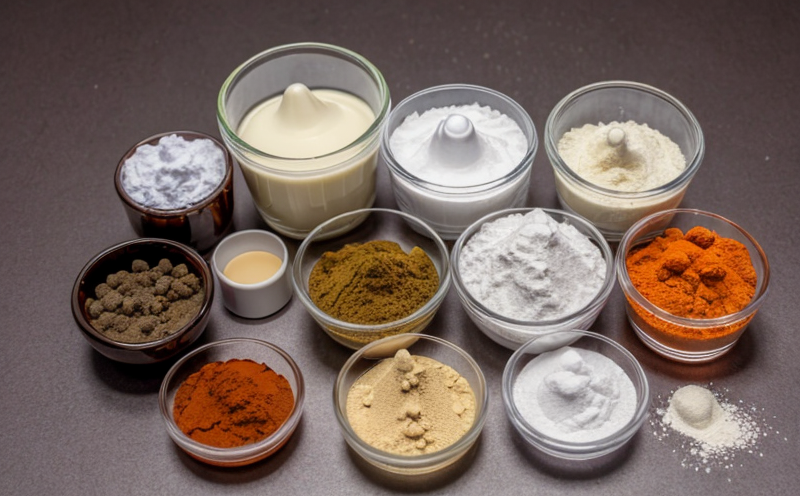Microscopy Starch Identification Testing
The process of microscopy starch identification testing is a critical method used to identify and characterize starch-based excipients and other formulation ingredients. This technique relies on the use of advanced microscopy equipment, including optical microscopes and scanning electron microscopes (SEM), which allow for detailed examination of sample morphology at various magnifications.
In pharmaceutical production, excipients play an essential role in ensuring that active drug substances are delivered effectively to patients. Starch is one such excipient used as a diluent, disintegrant, or binder due to its ability to absorb water and swell under specific conditions. Accurate identification of starch types ensures consistency across batches and adherence to regulatory standards.
The testing procedure involves several key steps:
- Sample preparation: The excipient sample must be carefully prepared by grinding it into a fine powder if necessary.
- Morphological analysis: Microscopy allows for the visualization of crystalline structures, particle size distribution, and surface characteristics.
- Comparison with reference standards: Known starch samples are used as benchmarks to compare unknowns through visual inspection or image processing techniques like Fourier Transform Infrared Spectroscopy (FTIR).
This method is particularly useful for distinguishing between different types of native starches and modified starches, which can have varying properties affecting their performance in formulations. For instance, cornstarch differs from rice starch not only by its origin but also because of differences in molecular weight distribution and degree of branching.
Accurate identification helps manufacturers select appropriate excipients for specific applications while avoiding potential issues related to incorrect usage or substitution. It supports compliance with Good Manufacturing Practices (GMP), ensuring product quality, safety, and efficacy.
| Aspect | Description |
|---|---|
| Sample Preparation | The sample should be ground to a fine powder if necessary. Impurities such as fibers or other non-starch materials need removal. |
| Microscopy Technique | Optical and SEM microscopes are used for detailed examination of the starch particles. |
| Data Analysis | The collected images undergo analysis to determine particle size, shape, and crystalline structure. |
| Reference Comparison | Known reference samples are compared visually or through image processing techniques like FTIR. |
By employing this technique, laboratories can provide reliable data that supports decision-making processes within the pharmaceutical industry. This includes determining optimal excipient ratios for tablet coating, selecting suitable carriers for oral suspensions, and ensuring consistency in manufacturing processes.
Scope and Methodology
| Aspect | Description |
|---|---|
| Sample Preparation | The excipient sample needs to be ground into a fine powder if necessary. Any impurities such as fibers or other non-starch materials must be removed. |
| Microscopy Technique | Both optical and scanning electron microscopes are utilized for examining the starch particles at various magnifications. |
| Data Analysis | The collected images are analyzed to determine particle size, shape, and crystalline structure. This helps in distinguishing between different types of native starches and modified starches. |
| Reference Comparison | Known reference samples are compared visually or through image processing techniques like FTIR for accurate identification. |
Benefits
Achieves precise differentiation between various starch types based on morphological and crystallographic properties.
SUPPORTS GMP compliance through accurate identification of excipients, ensuring batch-to-batch consistency.
HELPS INFORM FORMULATION DEVELOPMENT BY SELECTING OPTIMAL EXCIPIENTS FOR SPECIFIC APPLICATIONS.
ENSURES QUALITY AND RELIABILITY OF PHARMACEUTICAL PRODUCTS BY DETECTING POTENTIAL ISSUES EARLY.
PROVIDES RELIABLE DATA TO SUPPORT DECISION-MAKING PROCESSES WITHIN THE PHARMACEUTICAL INDUSTRY.
PROMOTES CONSISTENCY IN MANUFACTURING PROCESSES BY AVOIDING POTENTIAL ISSUES CAUSED BY INCORRECT EXCIPIENT USAGE OR SUBSTITUTION.





